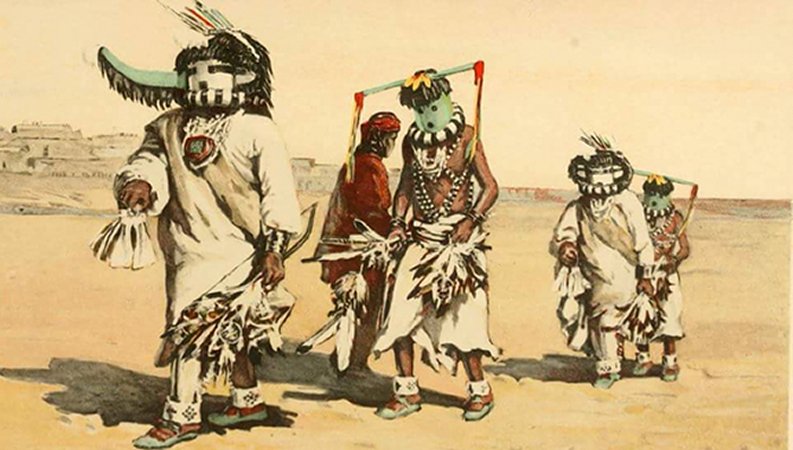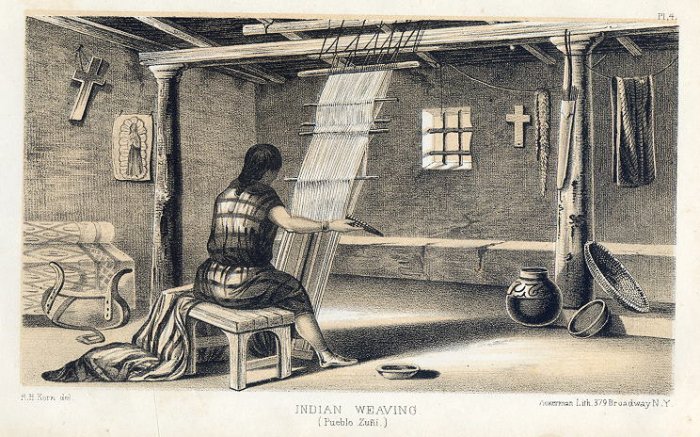Zuni Indians Bravely Fought For Their Ancient Culture, Traditions And Respect For Their Ancestors
Thalia Lightbringer - AncientPages.com - The Zuni people made beautiful things from silver and had a rich cultural tradition, but were primarily farmers. How then did these Pueblo people get mixed up with the Spanish legend of golden cities?
Their story is an interesting one, since they are one of the few tribes who managed to keep their way of life intact. What is the truth about these unique people, and how did they maintain their culture in spite of pressure from the Spanish invaders?
Zuni Rain Priests and Warriors by Internet Archive Book Images, Public Domain
Who Are The Zuni?
The Zuni are one of the Western Pueblo tribes (along with the Hopi). They are primarily based in western New Mexico near the Arizona border. They have lived in this area for thousands of years. The Zuni and Hopi both resisted the Spanish attempts to integrate them and held on to their culture and traditions to a much greater extent than the other North American tribes.
Their language is unique as well. Though the Zuni preserved their culture and language, the words we use to refer to them come from the Spanish language. "Pueblo" is Spanish for "town," and "Zuni" is what the Spanish called this tribe, though the meaning of the word is uncertain. The Zuni called themselves "A:shiwi" (Shi’wi), meaning “the flesh.”
For more about their language and an intriguing theory that Buddhist monks from Japan may have integrated with the Zuni, see: Mysterious Zuni Indians And Japanese People May Be Related – Did Buddhist Monks Reach North America In 1350?
Zuni Silver Inlaid Brooch, 1890s; By Anagoria, Credit: Wikipedia
The Zuni traditions say that they came from the area of the Grand Canyon they called "Chimik’yana’kya dey’a" (Ribbon Falls on Bright Angel Creek), which comes from the north rim wall of the Grand Canyon and flows to the Colorado River.
Before that, Zuni mythology states that they came from somewhere underground. There they lived in four great caverns they called the "Four Wombs of the World." When it became too crowded and miserable there, the people begged for a change. Then the Sun-Father, Holder of the Paths of Life, made two new humans from his own being. These two left the caverns to become the first ancestors of the Zuni people.
Zuni Culture And Traditions
The Zuni have a matrilineal society of thirteen clans, respecting the mothers and grandmothers of the tribe. They have strong ties to the land around them and their traditions express this by celebrating the natural forces around them. Their ceremonies are complex and based on belief in the Ancient Ones, a sort of ancestral worship. They may be descendants of the prehistoric Anasazi.
There are six groups with separate priesthoods devoted to the worship of different supernatural entities. One of the most well-known of their ceremonial celebrations is the Shalako Festival in early winter. This festival involves rain dancers in colorful costumes who represent the deities who bring the rains and go throughout the village blessing new homes.
Zuni Fetishes by Internet Archive Book Images, Public Domain
The Zuni are one of the tribes which have a kachina cult. Kachinas are Spirits which the pueblo cultures believed brought rain and fertility. Salt is also such an important substance to the Zuni that they have associated it with a deity.
The Zuni Salt Lake about 60 miles south of the Zuni Pueblo is the home of the deity they call Salt Mother (Ma'lokkyattsik'I) and her husband Turquoise Man. This goddess of salt traveled around the world leaving deposits of salt wherever she rested. She gave salt to the Zuni people and instructed the priests in how to gather it. It is said that these two deities later left the people when they were bothered by people who had followed her from the seashore she used to live by. An arch in the sandstone there is believed by the Zuni to have been created when Salt Mother and Turquoise Man broke through the wall to enter the mesa when they left.
The Zuni express their traditions and stories through their art, considering it a material record which ties the past to the present. They make jewelry and do some interesting fetish carvings and paintings to express their culture and beliefs. In contrast to many other cultures, the men weave cloth and the women make the pottery.
USA, Indian Weaving (Pueblo Zuni), 1853; Source: ancestryimages.com
The Spanish Invasion And Search For Seven Cities Of Cibola
The Zuni first encountered Spanish colonizers in 1539. Fray Marcos de Niza led an expedition to the area of the Zuni pueblos after hearing rumors of wealth to be found there. Estevan, one of de Niza's men, demanded women and turquoise from the Zuni people they found there. The Zuni responded with violence, and de Niza fled. He spread tales of their cities, calling them the "Seven Cities of Cibola" and claiming they were filled with gold and treasure.
In response to this tale of treasure, Francisco Vásquez de Coronado led an expedition back to the Zuni pueblos a year later. Like de Niza, he found no gold, only resistance from the natives, and was infuriated. He didn't even find seven cities! From what we know, the Zuni had six major pueblo towns and no one is sure why de Niza reported seven.
Coronado sent out several scouting parties in search of the elusive riches. None of these expeditions paid off in treasure, but those led by García López de Cárdenas were the first Europeans to view the Grand Canyon. The men who went on this disastrous mission ended up impoverished and discouraged.
Sunrise at Grand Canyon. Credit: Wikipedia
The Zuni continued to fight the Spanish influence and pressure to change their culture and accept Christianity. The people moved to one fortified pueblo. In 1680, the Zuni were part of the Pueblo Rebellion which defeated the Spanish. They remained independent until 1691, when the Spanish took control of the area once more. Even so, the Zuni still fought against the Spanish ideas of civilization. Eventually, the Spanish were forced to make peace with them and the Zuni in New Mexico remain strong in their culture and traditions to this day.
There were never any cities of gold in the pueblo area. Perhaps these tales originated with other tribes wishing to get the Spanish to leave them alone. It has also been suggested that de Niza saw the pueblo villages at a time when the light gave them a golden tint. He was never allowed to get very close and fled immediately after contact with the Zuni.
If the Spanish had not been so greedy for gold, they may have appreciated that they did find another kind of riches, and their expedition might not have left them in poverty. If they had approached the Zuni with the intention of peaceful trade, they may have been able to at least come back with some beautiful silver jewelry and tales of a marvelous culture living in an awe-inspiring landscape.
Updated on November 9, 2024
Written by – Thalia Lightbringer – AncientPages.com Staff Writer
Copyright © AncientPages.com All rights reserved. This material may not be published, broadcast, rewritten or redistributed in whole or part without the express written permission of AncientPages.com
Expand for referencesNative American Mythology A to Z by Patricia Ann Lynch; 2004
Report of an Expedition down the Zuni and Colorado Rivers,; 1853
Annual report of the Bureau of American Ethnology to the Secretary of the Smithsonian Institution; Smithsonian Institution. Bureau of American Ethnology; 1895; Washington: U. S. Govt. Print. Off.
Zuñi fetiches by Frank Hamilton Cushing; 1883; Washington: U.S. Govt. Print. Off.
More From Ancient Pages
-
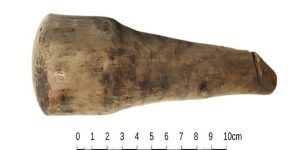 Unique Roman Artifact Discovered At Vindolanda Was More Than A Good Luck Charm
Archaeology | Feb 20, 2023
Unique Roman Artifact Discovered At Vindolanda Was More Than A Good Luck Charm
Archaeology | Feb 20, 2023 -
 Curious Encounter Between Inuit And Vikings Led To Something Surprising That Shaped History
Featured Stories | Aug 4, 2024
Curious Encounter Between Inuit And Vikings Led To Something Surprising That Shaped History
Featured Stories | Aug 4, 2024 -
 Can Diseases Explain Why Neanderthals Suddenly Disappeared About 40,000 Years Ago?
Archaeology | Nov 9, 2019
Can Diseases Explain Why Neanderthals Suddenly Disappeared About 40,000 Years Ago?
Archaeology | Nov 9, 2019 -
 Triumphal Arch Of Roman Emperor Constantine And His Great Vision
Featured Stories | Jul 12, 2017
Triumphal Arch Of Roman Emperor Constantine And His Great Vision
Featured Stories | Jul 12, 2017 -
 Records Of Pompeii’s Survivors Have Been Found – Archaeologists Are Starting To Understand How They Rebuilt Their Lives
Featured Stories | Jun 13, 2024
Records Of Pompeii’s Survivors Have Been Found – Archaeologists Are Starting To Understand How They Rebuilt Their Lives
Featured Stories | Jun 13, 2024 -
 Paleolithic Cave Dwellers And Light They Could Get In Darkness
Archaeology | Jun 21, 2021
Paleolithic Cave Dwellers And Light They Could Get In Darkness
Archaeology | Jun 21, 2021 -
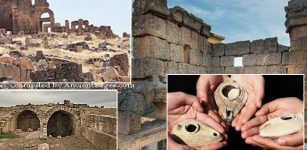 1,500-Year-Old Ancient Lamps Unearthed In Zerzevan Castle In Southeast Turkey
Archaeology | Nov 25, 2019
1,500-Year-Old Ancient Lamps Unearthed In Zerzevan Castle In Southeast Turkey
Archaeology | Nov 25, 2019 -
 Burial Practices In Unified Cultures Of Early Medieval Europe
Archaeology | Jan 22, 2021
Burial Practices In Unified Cultures Of Early Medieval Europe
Archaeology | Jan 22, 2021 -
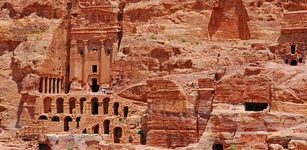 Skilled Nabataeans Celestially Aligned Petra’s Wonderful Architecture
Featured Stories | Mar 6, 2014
Skilled Nabataeans Celestially Aligned Petra’s Wonderful Architecture
Featured Stories | Mar 6, 2014 -
 Home Of The Gods – Arrival Of Golden Ships – Part 1
Ancient Mysteries | Jun 12, 2018
Home Of The Gods – Arrival Of Golden Ships – Part 1
Ancient Mysteries | Jun 12, 2018 -
 Mesopotamians Worshipped An Unusual And Peculiar-Looking Creature – Archaeology And Sacred Texts Reveal – But What Was It?
Featured Stories | Dec 19, 2024
Mesopotamians Worshipped An Unusual And Peculiar-Looking Creature – Archaeology And Sacred Texts Reveal – But What Was It?
Featured Stories | Dec 19, 2024 -
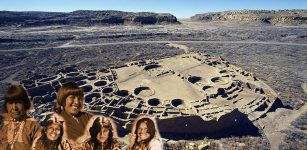 Ancient Chaco Was Organized Society Ruled By Women, Study Suggests
Archaeology | Mar 6, 2017
Ancient Chaco Was Organized Society Ruled By Women, Study Suggests
Archaeology | Mar 6, 2017 -
 Why Was The World’s Oldest Known Rune Stone At The Svingerud Grave Deliberately Broken Into Pieces?
Archaeology | Feb 3, 2025
Why Was The World’s Oldest Known Rune Stone At The Svingerud Grave Deliberately Broken Into Pieces?
Archaeology | Feb 3, 2025 -
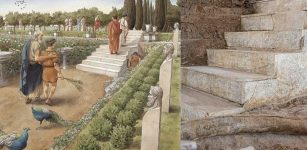 Lavish Home And Exotic Garden Of Emperor Caligula Discovered In Rome
Archaeology | Nov 19, 2020
Lavish Home And Exotic Garden Of Emperor Caligula Discovered In Rome
Archaeology | Nov 19, 2020 -
 Early Humans Reached Northwest Europe 45,000 Years Ago – New Research Shows
Human Beginnings | Jan 31, 2024
Early Humans Reached Northwest Europe 45,000 Years Ago – New Research Shows
Human Beginnings | Jan 31, 2024 -
 Strange Story Of Tecumseh’s Comet, Black Sun Prophecy And New Madrid Earthquakes – The Biggest Earthquakes In American History
Ancient Mysteries | Nov 14, 2018
Strange Story Of Tecumseh’s Comet, Black Sun Prophecy And New Madrid Earthquakes – The Biggest Earthquakes In American History
Ancient Mysteries | Nov 14, 2018 -
 The Bayeux Tapestry: One Of The Great Historical Records Of The Middle Ages
Artifacts | Feb 29, 2016
The Bayeux Tapestry: One Of The Great Historical Records Of The Middle Ages
Artifacts | Feb 29, 2016 -
 What Did A Day In Pharaoh’ s Life Look Like?
Ancient History Facts | Dec 9, 2019
What Did A Day In Pharaoh’ s Life Look Like?
Ancient History Facts | Dec 9, 2019 -
 On This Day In History: Ensisheim Meteorite Fell To Earth – On Nov 7, 1492
News | Nov 7, 2016
On This Day In History: Ensisheim Meteorite Fell To Earth – On Nov 7, 1492
News | Nov 7, 2016 -
 Why Were Swords So Important To Ancient Vikings?
Ancient History Facts | Oct 4, 2017
Why Were Swords So Important To Ancient Vikings?
Ancient History Facts | Oct 4, 2017

